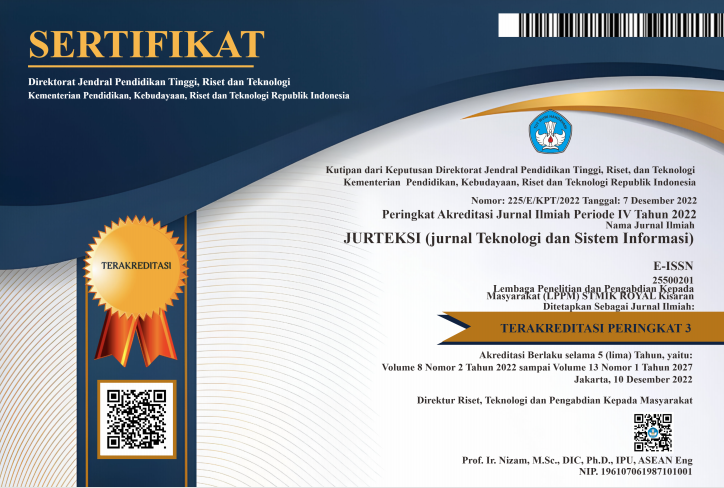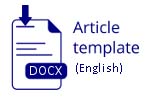ESTIMATION OF JAVA GRDP IN REGENCY/CITY LEVEL: SATELLITE IMAGERY AND MACHINE LEARNING APPROACHES
Abstract
Abstract: Gross Regional Domestic Product (GRDP) is one of the most important socio-economic indicators. In order to gain a more comprehensive understanding of the current economic situation and regional differences, estimating GRDP using integration of satellite imagery and official statistics data can provide valuable information. This research estimates the GRDP value in 2022 by using data in 2019 to 2021 related to two aspects, agriculture and non-agriculture. Soil adjusted vegetation index (SAVI), enhanced vegetation index (EVI), and land cover (LC) used as agriculture aspect, while nighttime light (NTL), human settlement index (HSI), land area, and population per regency/city used as non-agriculture aspect. GRDP estimation are produced with machine learning approach using support vector machine (SVM) and random forest (RF) method. Correlation test on each variable shows only land area that does not have a significant correlation with GRDP. RF model then chosen as the best model with RMSE, MSE, MAE, and R2 value of 0.2549; 0.5049; 0.7727; and 0.2543, respectively. The estimated values acquired in several regencies/cities have rather near, some even very close to the official statistics values.
Keywords: GRDP; satellite imagery; machine learning; random forest; support vector machine
Abstrak: Produk Domestik Regional Bruto (PDRB) merupakan salah satu indikator sosio-ekonomi yang penting. Penghitungan nilai PDRB dengan pendekatan yang melibatkan kombinasi data citra satelit dan statistik resmi dapat memberikan informasi serta pemahaman yang lebih komprehensif. Penelitian ini melakukan estimasi nilai PDRB pada tahun 2022 menggunakan data tahun 2019 hingga 2021 dengan melibatkan dua aspek, agrikultur dan non-agrikultur. Data soil adjusted vegetation index (SAVI), enhanced vegetation index (EVI), dan tutupan lahan (land cover/LC) digunakan sebagai aspek agrikultur, sementara data citra cahaya malam (NTL), human settlement indeks (HSI), luas wilayah kabupaten/kota, dan jumlah populasi per kabupaten/kota digunakan sebagai aspek non-agrikultur. Estimasi PDRB dihasilkan dengan menggunakan pendekatan machine learning berupa support vector machine (SVM) dan random forest (RF). Pengecekan korelasi antarvariabel menunjukkan bahwa hanya variabel luas wilayah tidak berpengaruh signifikan terhadap nilai PDRB. Model random forest kemudian dipilih sebagai model terbaik dengan nilai evaluasi RMSE, MSE, MAE, dan berturut-turut sebesar 0.2549, 0.5049, 0.7727, dan 0.2543. Nilai estimasi yang diperoleh di beberapa kabupaten/kota cukup mendekati, bahkan ada yang sangat dekat dengan nilai statistik resmi.
Kata kunci: PDRB; citra satelit; machine learning; random forest; support vector machine
References
R. Hawari and F. Kartiasih, “Kajian Aktivitas Ekonomi Luar Negeri Indonesia Terhadap Pertumbuhan Ekono mi Indonesia Periode 1998-2014,†MED IA Stat., vol. 9, no. 2, pp. 119–132, Dec. 2016, doi: 10.14710/medstat.9.2. 119-132.
I. P. Pertiwi, N. D. Camalia, R. Rega, and F. Kartiasih, “Mencermati Pengaruh Utang Dan Variabel Makroekonomi Ter hadap Sustainabilitas Fiskal Di Indon esia,†J. Ilm. Ekon. Dan Bisnis, vol. 20, no. 2, pp. 185–193, Oct. 2023, doi: 10.31849/jieb.v20 i2.12259.
A. Kusumasari and F. Kartiasih, “Aglom erasi Industri dan Pengaruhnya terhadap Pertumbuhan Ekonomi Jawa Barat 2010-2014,†J. Apl. Stat. Komputasi Stat., vol. 9, no. 2, Art. no. 2, Dec. 2017, doi: 10.34123 /jurnalas ks.v9i2.143.
Badan Pusat Statistik, “Produk Domestik Regional Bruto Kabupaten Kota di Indonesia 2017-2021,†07100.2203, p. xx+180, 2022.
B. P. S. Indonesia, “Statistik Indonesia 2021.†Accessed: Mar. 23, 2024. [Online].
X. Li, H. Xu, X. Chen, and C. Li, “Pote ntial of NPP-VIIRS Nighttime Light Imagery for Modeling the Regional Eco nomy of China,†Remote Sens., vol. 5, no. 6, pp. 3057–3081, Jun. 2013, doi: 10.3390/rs5063057.
X. Chen and W. D. Nordhaus, “VIIRS Nighttime Lights in the Estimation of Cross-Sectional and Time-Series GDP,†Remote Sens., vol. 11, no. 9, p. 1057, May 2019, doi: 10.3390/rs11091057.
X. Cao, Y. Hu, X. Zhu, F. Shi, L. Zhuo, and J. Chen, “A simple self-adjusting model for correcting the blooming effects in DMSP-OLS nighttime light images,†Remote Sens. Environ., vol. 224, pp. 401–411, Apr. 2019, doi: 10.1016/j.rse.2019.02.019.
S. Keola, M. Andersson, and O. Hall, “Monitoring Economic Development from Space: Using Nighttime Light and Land Cover Data to Measure Economic Growth,†World Dev., vol. 66, pp. 322–334, Feb. 2015, doi: 10.1016/j.worlddev. 2014.08.017.
K. Faisal, A. Shaker, and S. Habbani, “Modeling the Relationship between the Gross Domestic Product and Built-Up Area Using Remote Sensing and GIS Data: A Case Study of Seven Major Cities in Canada,†ISPRS Int. J. Geo-Inf., vol. 5, no. 3, p. 23, Feb. 2016, doi: 10.3390/ijgi50 30023.
N. S. Harum, M. Aini, M. A. Risxi, and F. Kartiasih, “Pengaruh Sosial Ekonomi dan Kesehatan terhadap Pengeluaran Konsumsi Pangan Rumah Tangga Provinsi Jawa Tengah Tahun 2020,†Semin. Nas. Off. Stat., vol. 2023, no. 1, Art. no. 1, Oct. 2023, doi: 10.34123/ semnasoffstat.v2023i1.1919.
C. D. Elvidge, M. Zhizhin, T. Ghosh, F.-C. Hsu, and J. Taneja, “Annual Time Series of Global VIIRS Nighttime Lights Derived from Monthly Averages: 2012 to 2019,†Remote Sens., vol. 13, no. 5, p. 922, Mar. 2021, doi: 10.3390/rs13050 922.
M. Hu and B. Xia, “A significant increa se in the normalized difference vegeta tion index during the rapid economic development in the Pearl River Delta of China,†Land Degrad. Dev., vol. 30, no. 4, pp. 359–370, 2019, doi: 10.1002/ ldr.3221.
W. Yue, J. Gao, and X. Yang, “Estima tion of Gross Domestic Product Using Multi-Sensor Remote Sensing Data: A Case Study in Zhejiang Province, East China,†Remote Sens., vol. 6, no. 8, pp. 7260–7275, Aug. 2014, doi: 10.3390 /rs6087260.
J. Sun, L. Di, Z. Sun, J. Wang, and Y. Wu, “Estimation of GDP Using Deep Learning With NPP-VIIRS Imagery and Land Cover Data at the County Level in CONUS,†IEEE J. Sel. Top. Appl. Earth Obs. Remote Sens., vol. 13, pp. 1400–1415, 2020, doi: 10.1109/JSTARS.2020.2983331.
G. C. McCord and M. Rodriguez-Heredia, “Nightlights and Subnational Economic Activity: Estimating Departmental GDP in Paraguay,†Remote Sens., vol. 14, no. 5, p. 1150, Feb. 2022, doi: 10.3390/rs14051150.
R. Zulkarnain, “Estimasi PDB Mikroregio nal: Studi Kasus di Pulau Jawa,†Semin. Nas. Off. Stat., vol. 2022, no. 1, pp. 885–894, Nov. 2022, doi: 10.34123/semnasoffsta t.v2022i1.1257.













